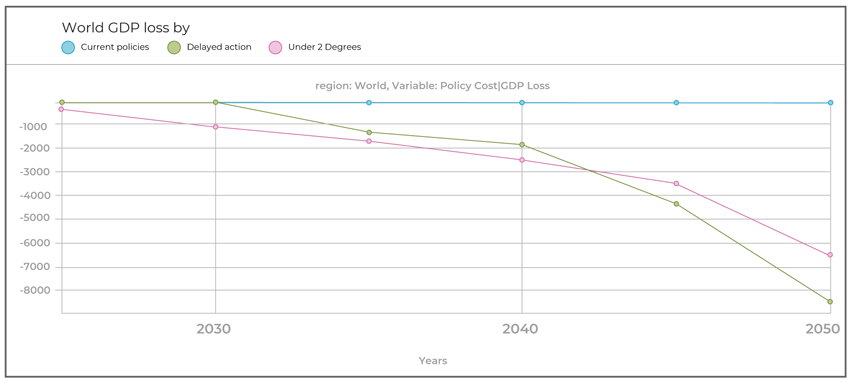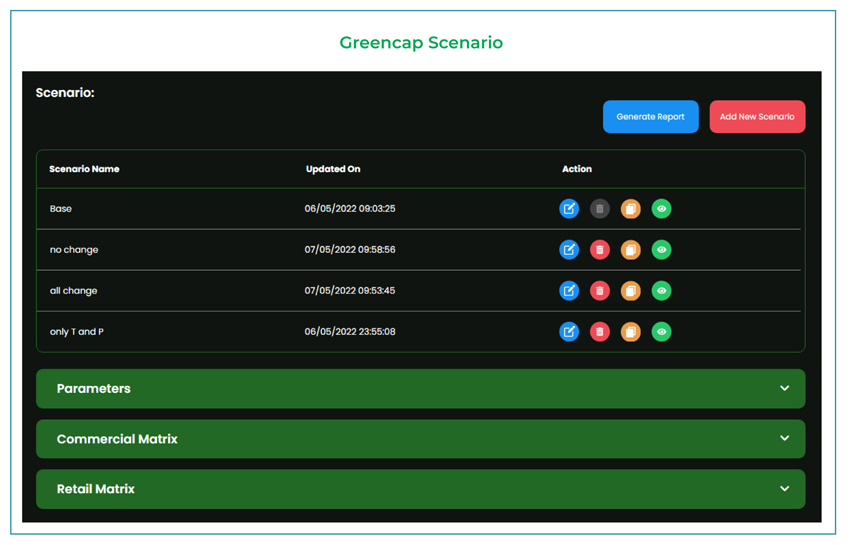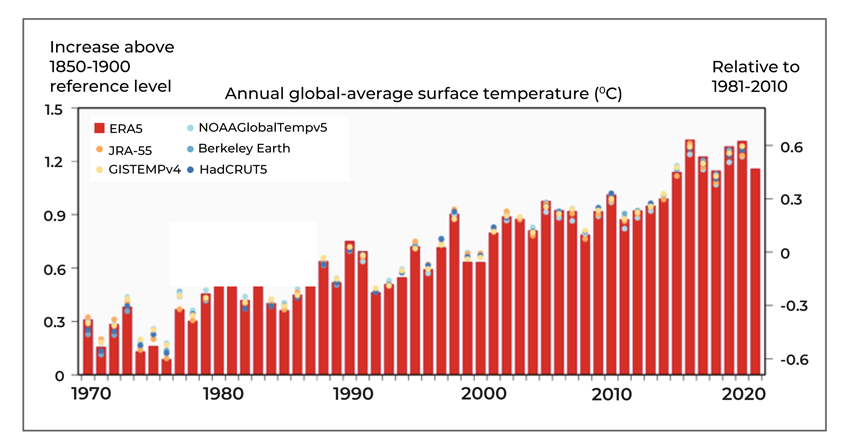Heat waves in Europe have seen record temperatures and wildfires. Conflict in Ukraine has created huge energy price increases. After a two-year pandemic, lessons can be learned.
Weather and climate are not the same…
Record hot days are not, in themselves, evidence of climate change. Climate is, by definition, a measure of long-term weather patterns. In this context, current records being broken are most notable for the fact that they are breaking records that were set in the last two or three years.
- The U.K. record set on July 19, 2022 (104.5 degrees) broke the previous high of July 25, 2019 (101.7 degrees)
- 2022 is on track to join the last seven years as the hottest on record
The important point is the dramatic cost of adaptation. Heat waves of the magnitude seen during 2022 demonstrate just how much infrastructure built for cooler climates needs massive upgrading simply to deal with rises already locked into the system.
- Building materials need to be designed to withstand higher temperatures
- Roads need to be upgraded to avoid cracking and potholes
- Rail systems (vital to the transition) need to be improved to avoid rails buckling in the heat
The demand for energy for cooling and water has also increased, putting pressure on these important systems.
Adaptation is the major barrier to orderly mitigation…
Adapting to current levels of climate change has been shown to be hugely costly. As investment is made in this area, mitigation of future heating inevitably takes a back seat. This creates a positive feedback loop, which will see more and more tipping points being reached, putting policymakers globally on a constant ‘catch-up’ footing in the matter of climate change.
The fact that priority is given to adaptation does not change what ultimately will need to be done. This rather delays it until its need is demonstrated in a way that mitigation becomes the priority of communities, voters, and governments, which it inevitably will.
The pointers are, therefore, to a disorderly or ‘delayed action’ response. These describe the ultimate adoption of a pathway that keeps the world in a manageable temperature range but is put into place in a less organized way, giving impacted industries less time to prepare and adjust their working business models. Such transitional strategies have been costed out by the Network for Greening the Financial System (NGFS) and are available in the same way that ‘current policy’ models are.
It seems that the prudent data pathway to use as the basis for climate scenarios within banks will be bounded by these options.

Tragedy of the horizon…
Mark Carney, former Governor of the Bank of England, and now of the NGFS, coined the phrase ‘tradegy of the horizon’ to illustrate exactly the point about current needs superseding future ones in policymakers’ thoughts.
The truth of this being a major barrier to climate mitigation action can be seen when the global warming issue is juxtaposed with recent events, where billions of dollars can be found and spent in a very short amount of time, including COVID-19. The global pandemic enveloped the world in three months and saw governments globally shutting down large parts of their economies, putting supportive measures in place, including:
- Furlow schemes
- Risk-free business loans
- Eviction moratoriums
- Global transition to ‘working from home’ where possible
These measures were created and enacted within weeks of the pandemic starting. The acceptance by the electorates within countries, as well as the speed of the government response, is a testament to the fact that once it is clear that no action is worse, things can be done very quickly, regardless of cost.
The need for a transition to a greener global economy is not in scientific question and is accepted as an even greater threat than the COVID pandemic. The problem in implementing required measures, though, are:
- Impacts increase relentlessly but gradually, removing both the shock factor and the driver that would ordinarily have electorates demanding immediate action.
- The worst impacts are still framed as future possibilities, abstracted from day-to-day life that mitigation policies will disrupt.
- A slow start to global acceptance of climate change has meant that far too little has been put in place to replace fossil fuels. This means that energy security is at risk in many countries.
The last point is illustrated well by the European response to the Russian invasion of Ukraine. Sanctions were put in place, but not on energy, and Germany is re-opening coal plants as the only way to maintain energy security should the Russian supply be cut off. There cannot be a clearer example of how under-prepared the world is to phase out fossil fuels and their attendant CO2 emissions.
Light cutting through the gloom…
It is possible and logical to take a pessimistic view of the chances that the world will put itself on the green path, but there are also signs that it may.
The EU is actively bringing its ‘Carbon Border Adjustment’ plans into legislation, an act that would effectively export a large part of its carbon pricing standards to its trading partners. This does show how a progressive approach from a major player can have real influence far beyond its own borders.
It is also notable that the greening of the steel industry is continuing apace, with the discussion over the U.K.’s largest plant in Port Talbot, being around whether it closes or the government subsidizes half of the 3-billion-pound cost.
These are all positive signs that even in the economic carnage of the Ukraine war and post-pandemic recovery, transitional moves are being made.
Transitional assumptions can be drawn…
With so many competing economic priorities, we can conclude the following:
- Hard policies to put the world on a 2-degree warming path (or lower) will only be put in place when demanded through sufficient negative experience of climate change
- As negative experiences are felt and attributed to climate change, governments are likely to act quickly
- Negative climate and energy experiences are increasing, and the costs of doing too little in advance are being demonstrated in a variety of ways
The most likely outcome that is emerging from recent global experience is that a disorderly approach is quickly adopted in the latter half of this decade, which will be disruptive and expensive. However, this will also be seen as an immediate need as ‘freak’ heatwaves and wildfires become the new normal in previously temperate climates, as the tragic ‘horizon’ comes ever
closer into view.
Why banks should care about this…
Banks need to monitor the risks on their balance sheets. There are regulations and accounting standards that must be met that make this a priority for financial institutions. The economic shift that climate transition pathways represent forces banks to recreate these as specific risk scenarios to run against their loan books.
At a minimum, banks must run a range of scenarios, taking data from reputable sources such as the NGFS, against:
- Current policy pathways
- 2-degree pathways – orderly
- 2-degree pathways – disorderly/delayed action
It is likely, from stated COP26 ambitions, that this is where the transitional policy will be taken from. Of course, the more scenarios and pathways covered, the better, but economic impacts are still most likely to come from within these boundaries.
GreenCap can help…
GreenCap is a turnkey, Risk as a Service (RAAS) solution that enables banks to run their balance sheet against multiple climate scenarios and assess by loan and portfolio:
- Expected loss
- Unexpected loss
- Climate spread required to cover risk funding
- Expected fall in default probability (risk rating)



